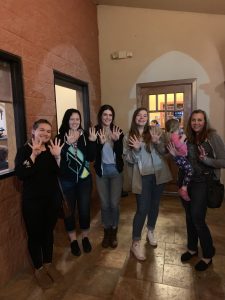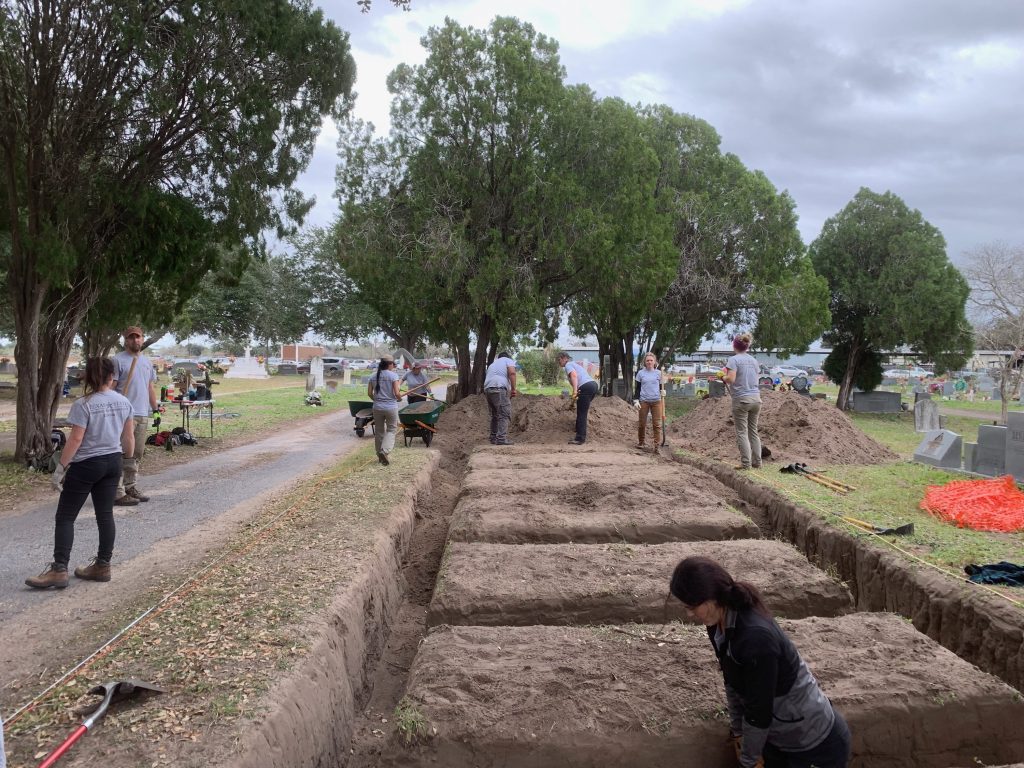
This morning we entered the Sacred Heart Cemetery full of mixed emotions. It was our last day in the field. Our hands were so sore and swollen we had trouble bending our fingers. Our bodies were aching. Sidney was getting sick. We’d been using icy hot, ibuprofen, ice packs and taping our blisters almost every day, but we knew once we got warmed up and moving that we could push through the pain. The UIndy team was on our third plot of the cemetery which was almost complete. We were all getting loopier by the day and singing songs that had nothing to do with archaeology as we shoveled and trenched endless mounds of dirt and investigated the area for missing individuals. Many of the Texas State students came over and helped us wrap up our final trenches before lunch, which was immensely helpful. We were proud to have met our goals this season and meet some long-term friends and colleagues in the process. This project is truly a team effort and we are all here for the same purpose.
After lunch, we were very fortunate to assist the South Texas Human Rights Center with their water station refills. These water stations are amazing tools that aid in the survival of human beings who are on their last leg. Each station consists of a 55-gallon barrel, 6 gallon-sized jugs of water, a post to keep them upright, and a flagpole to indicate their presence 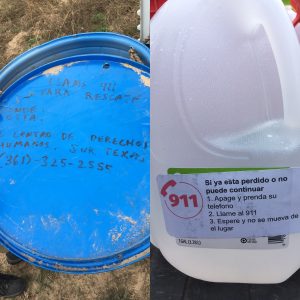 from afar. In addition, the Human Rights Center prints instructions on how to contact them and attaches them to each water bottle in case someone is desperate for help. The lids to the water stations also have contact information, and the GPS coordinate of that water station’s location so they can read it to the person they are contacting if they need assistance. Individuals who stumble upon these may have gone incredibly long periods of time without food and water. Many become lost for days in the thick, desert brushlands, but this route is their only option if they want to remain hidden. These water stations save people’s lives who may otherwise have be reduced to bone within days in the Texas heat.
from afar. In addition, the Human Rights Center prints instructions on how to contact them and attaches them to each water bottle in case someone is desperate for help. The lids to the water stations also have contact information, and the GPS coordinate of that water station’s location so they can read it to the person they are contacting if they need assistance. Individuals who stumble upon these may have gone incredibly long periods of time without food and water. Many become lost for days in the thick, desert brushlands, but this route is their only option if they want to remain hidden. These water stations save people’s lives who may otherwise have be reduced to bone within days in the Texas heat.
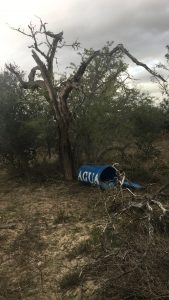 We were all very grateful to have been given the opportunity to participate in this process on our last day in Falfurrias. According to their website, the South Texas Human Rights Center currently services 144 water stations each and every week. Arden, Emily and I went with Eddie Canales to refill some stations on the nearby ranches. To complicate matters, Texas is almost entirely made up of privately owned ranches that do not allow Eddie to set up water stations on their properties. He informed me that only about 25% of the ranch owners allow him to do this work on their property. In addition, water jugs may spoil and water will leak out rendering them useless. Sometimes he finds them with intentional punctures or damage from people who disagree with helping the migrants.
We were all very grateful to have been given the opportunity to participate in this process on our last day in Falfurrias. According to their website, the South Texas Human Rights Center currently services 144 water stations each and every week. Arden, Emily and I went with Eddie Canales to refill some stations on the nearby ranches. To complicate matters, Texas is almost entirely made up of privately owned ranches that do not allow Eddie to set up water stations on their properties. He informed me that only about 25% of the ranch owners allow him to do this work on their property. In addition, water jugs may spoil and water will leak out rendering them useless. Sometimes he finds them with intentional punctures or damage from people who disagree with helping the migrants.
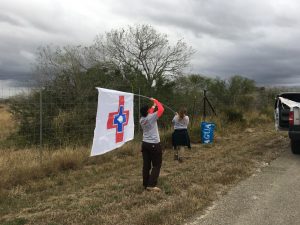
Eddie, Arden, Emily and I got to see two ranches with about four water stations each. Eddie Canales is an amazing person and it was so much fun to spend time with him as we did this. It was fascinating to hear about his daily experiences as the founder of the Human Rights Center and year-round resident in the area. We also spent quite a bit of time laughing while we bounced around in the backseat of Eddie’s 20-year-old 4×4 truck while we navigated sandy terrain to reach the water stations we intended to fill. Angela, Sidney and Dr. Latham went with Selina and Arianna (two other members of the South Texas Human Rights Center) to fill water stations on a different route.
In many ways, nine days in the field seems like a long time digging, but it was so much more than that. We do not solely feel passionate about digging in the dirt. We feel passionate about the humanitarian work that is being done here and feel a duty to continue assisting in the identification of the voiceless and deceased. We feel passionate about helping family members find out where their loved ones might be. Anthropology in the U.S. encompasses a multifaceted approach that includes cultural integration, and I feel that this experience has really shown me the importance of that approach. I am grateful to have been able to participate in a mission in which we work closely with people from different walks of life that have a common goal at heart.
